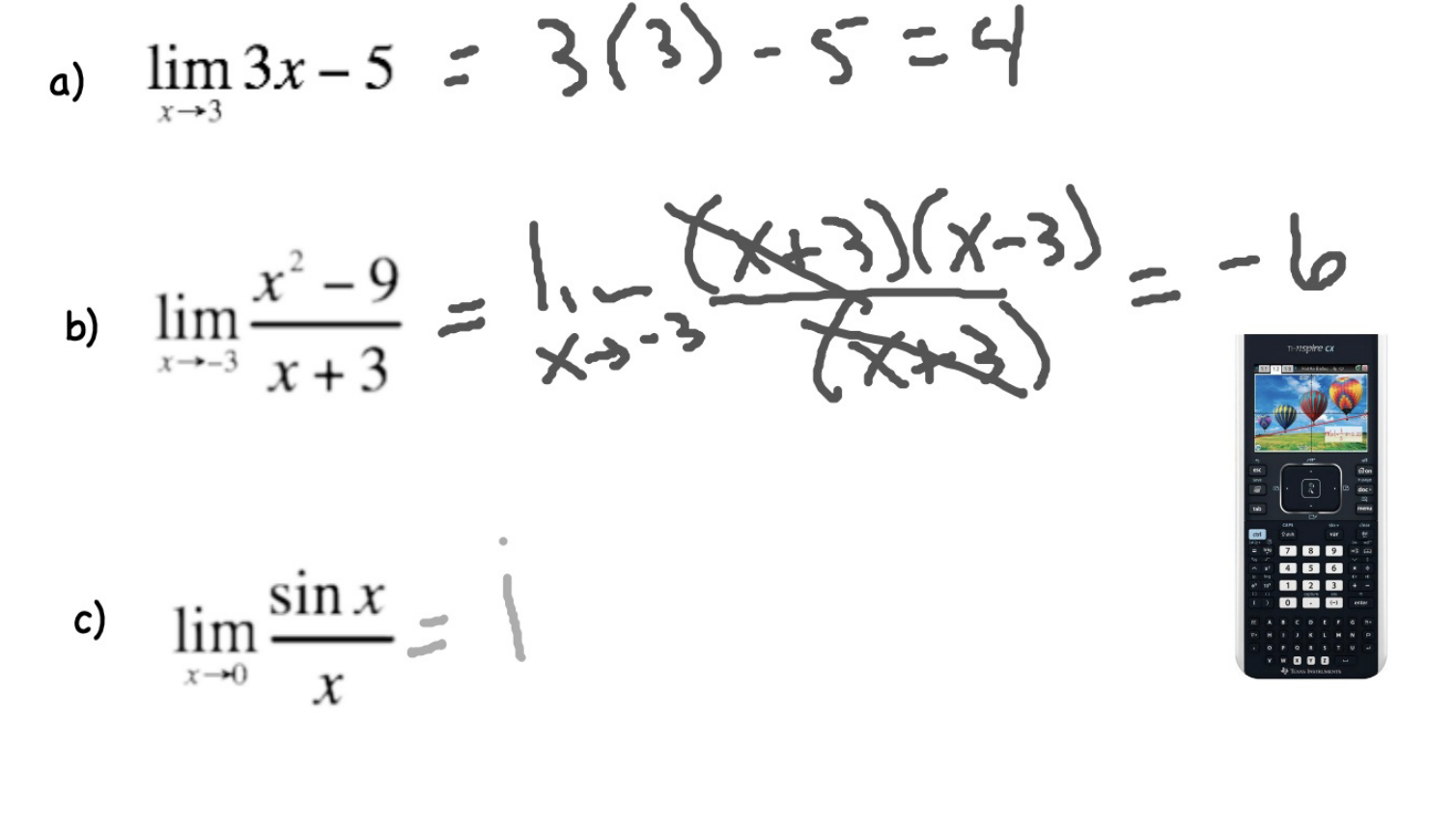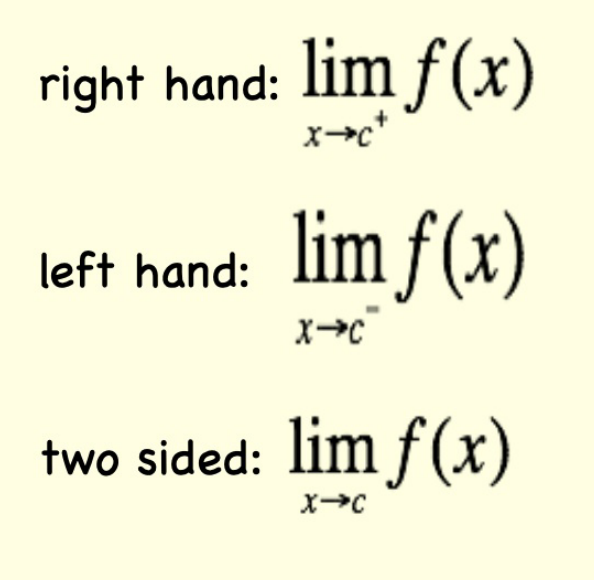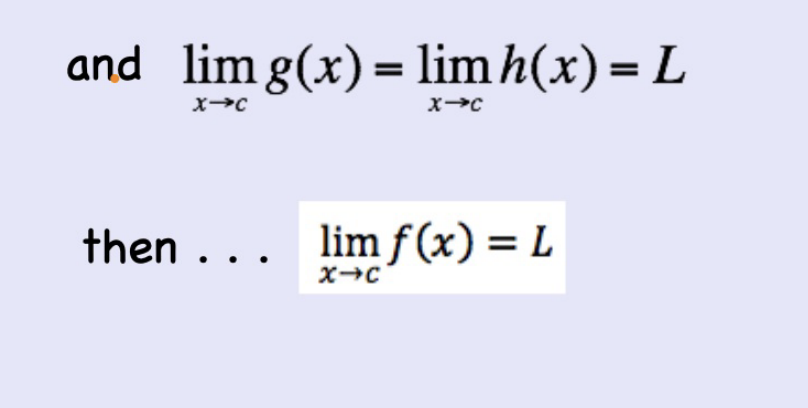Note
0.0(0)
Chat with Kai
AP Calculus AB Study Guides
AP Calculus AB Ultimate Guide
Unit 1: Limits and Continuity
Unit 2: Differentiation: Definition and Fundamental Properties
Unit 3: Differentiation: Composite, Implicit, and Inverse Functions
Unit 4: Contextual Applications of Differentiation
Unit 5: Analytical Applications of Differentiation
Unit 6: Integration and Accumulation of Change
Unit 7: Differential Equations
Unit 8: Applications of Integration
Studying for another AP Exam?
Check out our other AP study guides
introduction to limits
limits
- the concept of limits is one of the major ideas which distinguishes calculus from lower math courses, such as algebra and geometry
- limits give us language for describing how the outputs of a function behave as the inputs approach a particular value
limit equation:
 four tools exist for evaluating limits:
four tools exist for evaluating limits:
- substitution
- graphing
- numerical approximation (table)
- algebra (analytical approach)
evaluating limits
practice problems

- the existence of a limit as x approaches c (x → c) never depends on how the function may or may not be defined at c
- theorem one: there are six basic facts about limits
- sum rule: the limit of the sum of two functions equals the sum of the limits of two functions
- difference rule: the limit of the difference of two functions equals the difference of the limits of two functions
- product rule: the limit of a product of functions equals the product of the limit of each function
- constant multiple rule: the limit of a constant multiple of a function equals the product of the constant with the limit of the function
- quotient rule: the limit of a quotient of functions equals the quotient of the limit of each function
- power rule: the limit of the nth power of a function equals the nth power of the limit of the function
limits may be evaluated through the use of conjugates
- conjugate: change the sign (+ to −, or − to +) in the middle of two terms

one-sided limits and the sandwich theorem
f(x) = int x or [[x]]
one-sided limits

the sandwich theorem/the squeeze theorem
- if g(x) ≤ f(x) ≤ h(x) for all things x ≠ c in some interval about c,

we “trap” f(x) between two functions of known limit at c; thus, f has the same limit
Note
0.0(0)
Chat with Kai
AP Calculus AB Study Guides
AP Calculus AB Ultimate Guide
Unit 1: Limits and Continuity
Unit 2: Differentiation: Definition and Fundamental Properties
Unit 3: Differentiation: Composite, Implicit, and Inverse Functions
Unit 4: Contextual Applications of Differentiation
Unit 5: Analytical Applications of Differentiation
Unit 6: Integration and Accumulation of Change
Unit 7: Differential Equations
Unit 8: Applications of Integration
Studying for another AP Exam?
Check out our other AP study guides